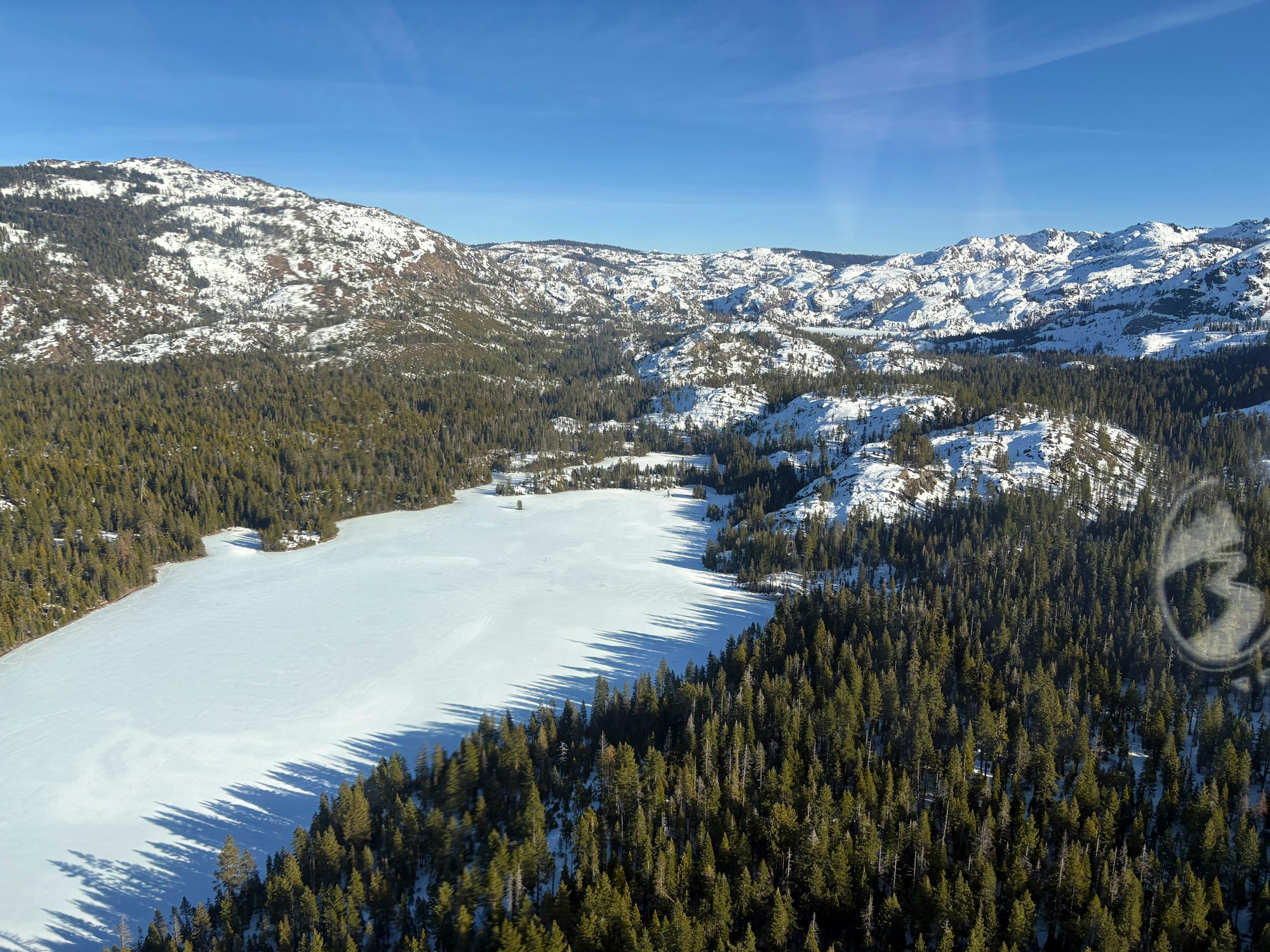NID February snow survey: snowpack at 87% before current winter storm

(Grass Valley, Feb. 4, 2025) All in all, the Nevada Irrigation District’s (NID) watersheds and water storage levels are weathering this year’s hydroclimate whiplash.
January 2025 was unseasonably dry, with only a handful of days that brought any precipitation to the District’s lower- and higher elevations. By contrast, in just a few days, February has received the amount of rain that rivals the usual tally for the entire month.
“A dry January brought precipitation totals below average and resulted in a below average snowpack for the first snow survey of the year,” said NID’s Water Resources Superintendent Thor Larsen. Even so, he added, “Reservoir storage remains high and continues to increase with the early February storms.”
Snow survey results
NID hydrographers conducted the first snow survey of the year last week, just before the current atmospheric river arrived. They measured an average water content in the snowpack of 20.3 inches, which was 87 percent of average.
The District conducts three official snow surveys each year in February, March and April. Results of the snow surveys are used to predict water availability locally and statewide.
NID hydrographers take surveys on five snow courses at varying elevations to get a good overview of the amount of snow in the watersheds that provide the District with water.
Here are the measurements from the February snow survey:
- NID’s highest course, Webber Peak, at 7,800 feet, had 53.6 inches of snow with a water content of 20.5 inches (survey taken on Jan. 29)
- English Mountain snow course (7,100 ft.) had 59.5 inches of snow with a water content of 27.3 inches (survey taken on Jan. 29)
- Webber Lake (7,000 ft.) had 44.1 inches of snow with a water content of 16.2 inches (survey taken on Jan. 29)
- Findley Peak (6,500 ft.) had a snowpack of 38.3 inches with a water content of 14.2 inches (survey taken on Jan. 30)
- Bowman Reservoir (5,650 ft.) had 26.3 inches of snow with a water content of 9.8 inches (survey taken on Jan. 30)
- At the lower Chalk Bluff snow course (4,850 ft.) on the Deer Creek watershed, no snow was present, as of Feb. 3 (the Chalk Bluff numbers are not included in the total average).
Note: snow water equivalent is an indicator of how much water the snowpack contains. This helps water managers plan for water use.
Water storage is in good shape
In other measurements, District reservoir storage is above average with 209,563 acre-feet on Jan. 29, 2025. That is 78 percent of capacity, which is 107 percent of average for the date.
Larsen added, “Rollins and Scotts Flat reservoirs have completely recovered from their low end-of-season levels that were a result of the Drum/Spaulding outage.”
Track NID river and reservoir data, click here.
